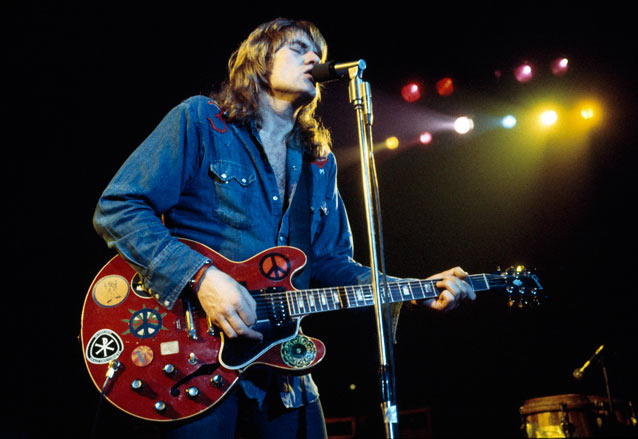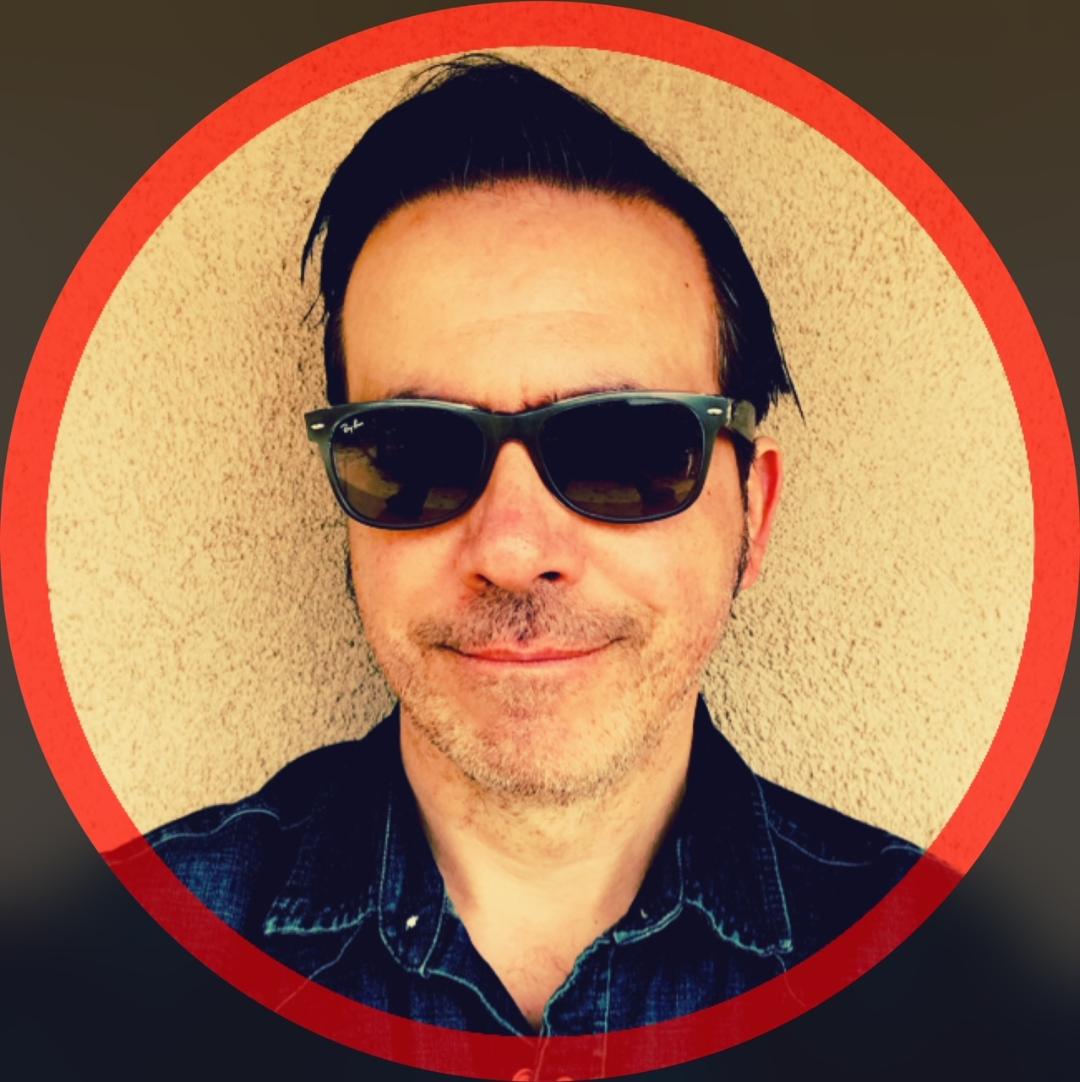Gear Talk with Former Ten Years After Guitarist Alvin Lee

From a guitarist's perspective, the 1970 Woodstock film, which documents the highs and lows of the August 1969 Woodstock Festival, has several highlights.
There's Jimi Hendrix's immortal take on "The Star-Spangled Banner," a mesmerizing performance by newcomers Santana, Richie Havens' thumb-fretting madness and Pete Townshend's high-flying Gibson SG acrobatics with the Who.
But for a full-on blues-rocking experience, there's no beating Ten Years After's adrenaline-fueled reading of "I'm Going Home." The performance, an intense nod to vintage blues and Fifties rock and roll, featured the lightning-fast fretwork of Ten Years After frontman Alvin Lee.
"The solo on the movie sounds pretty rough to me these days," Lee told Guitar World late last week. "But it had the energy, and that was what Ten Years After were all about at the time."
The performance made instant stars out of the British band, which led to more big-name festivals, a label change and their biggest hit, 1971's "I'd Love to Change the World."
Although a version of Ten Years After tours today, they do it without Lee, who has found happiness as a solo artist, carefully choosing a handful of festival performances each year. Lee is releasing a new studio album, Still On the Road to Freedom, August 28 via Rainman Records. The album's 13 new tracks revisit various points in Lee's career, with nods to Fifties rock, psychedelic music and blues. Along the way, of course, is a healthy serving of Lee's trademark riffs and sounds. The album title is a reference to his 1973 LP with Mylon LeFevre, On the Road to Freedom, which featured contributions from George Harrison, Steve Winwood, Jim Capaldi, Mick Fleetwood and Ron Wood.
Lee recently sat down to discuss his new album and his gear over the years, including his famous "Big Red" Gibson ES-335.
Get The Pick Newsletter
All the latest guitar news, interviews, lessons, reviews, deals and more, direct to your inbox!
How often do you pick up a guitar these days?
Pretty much every day. I write and record all the time; it’s my hobby and my passion. I have a Spanish gut-strung guitar, a Dobro resonator and a Line 6 Variax hanging on the wall, and they all get played regularly. The new Variax is very impressive.
Your new album covers a lot of musical ground, revisiting your past, looking to the future and offering a myriad of different guitar sounds. Did you intend to look back?
It kind of evolved from luck and circumstance, as if it were trying to get out on its own. I originally had 33 songs to choose from. As they developed and evolved, I picked out the ones that showed the most promise. As I continued to work on them, I realized they pretty much went through most of my musical influences and styles over the years, so from then on it became a time-warp concept.
What gear did you use on the new album?
Mainly a Gibbo [Gibson] ES-335 and a Martin acoustic. I used a Wal bass and a Gretch baritone guitar for bass, as well as Pete Pritchard’s Music Man and a doghouse double bass called Charlie Boy. Amp-wise, I used a Wem 15 Dominator and a very old Yamaha I bought from Mick Abrahams. I also used the original Pod, which is better than the new ones, as a pre-amp into a Fender Champ and Mustang. Plus Guitar Rig and Amplitude and too many others to mention.
On “Listen to Your Radio Station," I used the Metalizer pedal Leslie West gave me. It’s quite radical and has to be tamed, as the slightest finger twitch comes blasting through the amp. Leslie came up to me at the Night of the Guitars sound check and said, “Alvin, you’re a damn fine guitarist, but you’re not loud enough." He then proceeded to give me loudness lessons. I like Leslie’s playing. He has excellent rock and roll phrasing.
What are some of your more prized pieces of gear, the things you'd rush to save from a fire, for instance?
My Martin acoustic. I bought it in New York in 1970, and the guy gave me a receipt for $150 for the customs. I walked into the “something to declare” channel and showed the guy the receipt. He opened the case and said, “A Martin guitar with Grover machine heads for $150?” I had found the only customs man who was a musical-instrument expert. Four hours later, I walked out with my Martin having paid a fine, a penalty and having had to buy it back. Ever since then, I’ve used the "nothing to declare" channel.
On the album's opener, the title track, you can immediately tell it's Alvin Lee on guitar—not just because of your note choices but also your sound. How would you say your sound has evolved over the years? Are you still using your Woodstock-era Gibson ES-335?
I've still got the original Woodstock 335, but, sadly, I don’t use it these days as it has become too valuable. She’s now in a vault since some loony offered me half a million dollars for her. Sound-wise, I never use pedal effects on stage and seldom in the studio. I prefer to get my overload sustain from having the Marshall cranked up high, then by turning the guitar down to 5 or 6, you get a nice clean jazz sound. The crunch comes in around 7 or 8. What else do you need?
How involved were you in the creation of Gibson's Custom "Big Red" Alvin Lee ES-335?
That all came about because of Pat Foley at Gibson. He asked me if I'd be interested, and I said of course, it’s a great compliment. So he came over to England to photograph and measure Big Red, and Gibson pretty much took it from there. I had no involvement until I got the first prototype. Then I made a few changes, which resulted in my getting several more prototypes. Now I’ve got a whole bunch of them—a gaggle of Gibsons.
Who were your favorite guitarists when you were growing up?
My favorite country blues player was Big Bill Broonzy. City blues was Freddie King, but I liked them all—Muddy Waters, John Lee Hooker, Ralph Willis, Lonnie Johnson, Brownie McGhee and the three Kings, B.B., Albert and Freddie. Jazz-wise, I listened to Django, Barney Kessel and Wes Montgomery. Charlie Christian, Benny Goodman’s guitarist, was a great influence on my swing phrasing. My all-time favorite rock and roll players were Scotty Moore, Chuck Berry and Franny Beecher, and I listened to the country playing of Merle Travis.
Did you admire the other great fast bluesman of the time, Johnny Winter?
Strangely enough, I wasn't into fast guitarists. I preferred Peter Green’s subtle touch. I saw him with John Mayall’s Bluesbreakers at the Marquee Club in London and was very impressed. He was the only guitarist I've ever seen to turn the volume control on his guitar down during a solo.
What kind of delay/reverb, amp and overdrive did you use on the solo on "I'd Love to Change the World"?
As far as I remember, it was a Wem Dominator used as a pre-amp into the old Marshalls. I had the Wem 15-Watt power amp padded down to guitar input level. The echo was an EMT plate.
The first time I saw the Woodstock film, I was completely knocked out by Ten Years After's performance of "I'm Going Home." It is, without a doubt, one of the movie's highlights. I remember thinking I'd never seen a blues/rock guitarist play that fast before, at least in the context of 1969. And then there was the intensity of the band. Where the hell did that come from?
You’re obviously a man of very good taste! Seriously, though, I never really tried to play fast. It kind of developed from the adrenalin rush of the hundreds of gigs I did long before Woodstock. They called me "Captain Speedfingers" and such, but I didn't take it seriously. There were many guitarists faster than me—Django Reinhardt, Barney Kessel, John McLaughlin and Joe Pass to name a few. The solo in the movie sounds pretty rough to me these days, but it had the energy, and that was what Ten Years After were all about at the time. However, I often wonder what would have happened if they had used “I Can't Keep From Crying, Sometimes” in the movie instead of "I’m Going Home."
Anything else you'd like to add?
Rush out and buy Still On the Road to Freedom!
Keep up with Lee at his official website, alvinlee.com. You can pre-order Still On the Road to Freedom at Amazon.com.

Damian is Editor-in-Chief of Guitar World magazine. In past lives, he was GW’s managing editor and online managing editor. He's written liner notes for major-label releases, including Stevie Ray Vaughan's 'The Complete Epic Recordings Collection' (Sony Legacy) and has interviewed everyone from Yngwie Malmsteen to Kevin Bacon (with a few memorable Eric Clapton chats thrown into the mix). Damian, a former member of Brooklyn's The Gas House Gorillas, was the sole guitarist in Mister Neutron, a trio that toured the U.S. and released three albums. He now plays in two NYC-area bands.
“His songs are timeless, you can’t tell if they were written in the 1400s or now”: Michael Hurley, guitarist and singer/songwriter known as the ‘Godfather of freak folk,’ dies at 83
“The future is pretty bright”: Norman's Rare Guitars has unearthed another future blues great – and the 15-year-old guitar star has already jammed with Michael Lemmo









